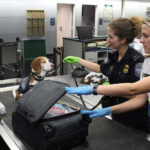Horse flies are more than just a nuisance; their bites are notoriously painful. If you’ve ever been unfortunate enough to cross paths with one of these persistent insects, you’ll know they can quickly ruin any outdoor activity. Their relentless buzzing and painful bites make enjoying your yard, garden, or even a simple walk outdoors a real challenge during horse fly season.
These insects are driven by a fundamental need: blood. Female horse flies, in particular, require a blood meal to reproduce successfully. They are not picky eaters, targeting a wide range of mammals, including horses, cattle, dogs, and, much to our dismay, humans. This need for blood makes them incredibly persistent and explains why they seem so determined to bite.
So, how can you reclaim your summer fun and keep these irritating pests at bay? While completely eliminating horse flies might be an uphill battle, there are definitely strategies you can employ to minimize their presence and protect yourself from their painful bites.
Understanding Why Horse Flies Are So Hard to Control
Before diving into solutions, it’s important to understand why getting rid of horse flies is so challenging. Unlike some other pests, horse flies are difficult to control on a large scale due to their breeding habits. They lay their eggs in and around water sources and swampy areas. This means their breeding grounds are often extensive and dispersed, making targeted chemical control methods largely ineffective for reducing the overall adult population.
Alt text: Close-up of a horse fly, distinguished by its large green eyes and robust body, resting on a green leaf.
Horse fly larvae hatch and develop in water or mud, taking anywhere from a month to over a year to mature, depending on the species. After larval development, they pupate for one to four weeks before emerging as adult horse flies. This extended life cycle and aquatic breeding phase further complicate control efforts.
Adult horse flies are substantial in size, ranging from three-quarters of an inch to over an inch long. Many common species, often called “greenheads” or “yellow flies,” have a yellowish coloration and striking green eyes. Others are grayish-brown with very large eyes and clear wings. Their size and powerful flight contribute to their persistence and ability to deliver a painful bite.
Effective Personal Protection Strategies
Given the difficulties in broad-scale control, personal protection becomes paramount when dealing with horse flies. Insect repellents can offer some degree of relief, but they aren’t a foolproof solution. For the most effective defense against horse fly bites, a combination of strategies is recommended.
Wearing appropriate clothing is a crucial first step. Opt for light-colored, long-sleeved shirts and long pants. Horse flies are visually oriented and are attracted to dark colors, so lighter shades can make you less of a target. Clothing acts as a physical barrier, significantly reducing the areas of skin exposed to bites.
Alt text: A person sprays insect repellent on their arm outdoors, demonstrating a method of personal protection against biting insects like horse flies.
In conjunction with protective clothing, insect repellents are a valuable tool. Repellents containing DEET, picaridin, citronella, geraniol, or oil of lemon eucalyptus have been shown to provide some protection against horse flies. Apply repellent to exposed skin and clothing, following product instructions carefully. Remember that repellents need to be reapplied periodically, especially if you are sweating or near water.
Are There Ways to Reduce Horse Flies in Your Area?
While complete eradication isn’t feasible, there are some localized measures you can take to potentially reduce horse fly numbers around your property. Eliminating standing water where possible can help minimize breeding sites. This includes emptying containers like buckets, wading pools, and ensuring proper drainage in your yard.
Fly traps specifically designed for horse flies can also be somewhat effective in reducing local populations. These traps often utilize visual lures and attractants to capture adult flies. Fly swatters, while low-tech, can also be surprisingly effective for individual flies, especially in smaller outdoor spaces.
It’s also worth noting the seasonality of horse flies. Peak horse fly season is typically in June and early summer. As the summer progresses, their numbers generally begin to decline. This seasonal pattern offers some natural relief as the hotter months wear on.
Conclusion: Managing Horse Flies for Summer Enjoyment
Unfortunately, there’s no magic bullet for completely getting rid of horse flies. Despite the lack of a perfect solution, understanding their biology and employing effective personal protection strategies can significantly improve your outdoor experience during horse fly season. By combining protective clothing and insect repellents, and perhaps utilizing localized control methods like traps and fly swatters, you can minimize the impact of these persistent pests and reclaim your summer fun. While you might not be able to eliminate them entirely, being prepared and proactive is the best approach to manage horse flies and enjoy the outdoors.
